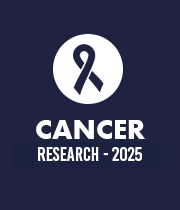Title : Overcoming resistance in ROS1-positive NSCLC: IDX001 as a promising next-generation therapeutic
Abstract:
ROS1 (Receptor Tyrosine Kinase ROS Proto-Oncogene 1) mutations in non-small cell lung cancer (NSCLC) lead to the formation of chimeric proteins that activate key oncogenic signaling pathways, contributing to tumorigenesis. These mutations, including ROS1 gene rearrangements such as ROS1-CD74 and ROS1-SLC34A2, are present in 1-2% of NSCLC cases, predominantly affecting younger, non-smoking patients with adenocarcinoma histology. While ROS1 inhibitors like crizotinib and entrectinib are effective, resistance due to secondary mutations in the ROS1 kinase domain, such as L1951R, L2086F, G2032R, and G2032R/L2086F presents a significant clinical challenge. These mutations hinder the binding of existing inhibitors, necessitating the development of next-generation therapies. Repotrectinib, a ROS1/TRK/ALK inhibitor, has shown activity against some resistance mutations, but it faces challenges like residual resistance and CNS-related efficacy limitations. Tumor heterogeneity further complicates treatment, as selective pressure can lead to the emergence of new mutations or activation of parallel pathways. This study explores the potential of a novel small-molecule inhibitor, IDX001, in comparison to repotrectinib, focusing on its effectiveness against various ROS1 mutations. Computational docking revealed that IDX001 exhibits superior or comparable binding energy across various ROS1 mutations, including the clinically relevant G2032R/L2086F combination. Molecular Dynamics simulations conducted over 50 ns demonstrated that IDX001 maintained a stable conformation throughout the simulation period, in contrast to repotrectinib, which showed signs of instability and dissociation from the ROS1 kinase binding pocket. Toxicity predictions for IDX001 revealed no significant toxicity risks. A critical factor in the management of ROS1-positive NSCLC is the ability to address brain metastases, which are commonly observed in ROS1- positive patients. IDX001 demonstrated superior penetration of the blood-brain barrier (BBB), an essential attribute for treating patients with CNS involvement. Toxicity prediction tools confirmed that IDX001 could cross the BBB without inducing toxicity, a key advantage over existing ROS1 inhibitors. Furthermore, IDX001 was identified as a P-glycoprotein I and II inhibitor, though not a P-glycoprotein substrate, ensuring effective CNS penetration without the risk of efflux. It was also found to be a CYP3A4 substrate (but not a CYP2D6 substrate or CYP1A2 inhibitor), which minimizes potential drug-drug interactions and supports its safe use in combination therapies. These findings highlight the promising therapeutic potential of IDX001 as a more effective treatment option for ROS1-positive NSCLC, particularly in cases with brain metastases, and suggest that it could provide a superior alternative to current therapies, overcoming common resistance mechanisms and improving patient outcomes.


